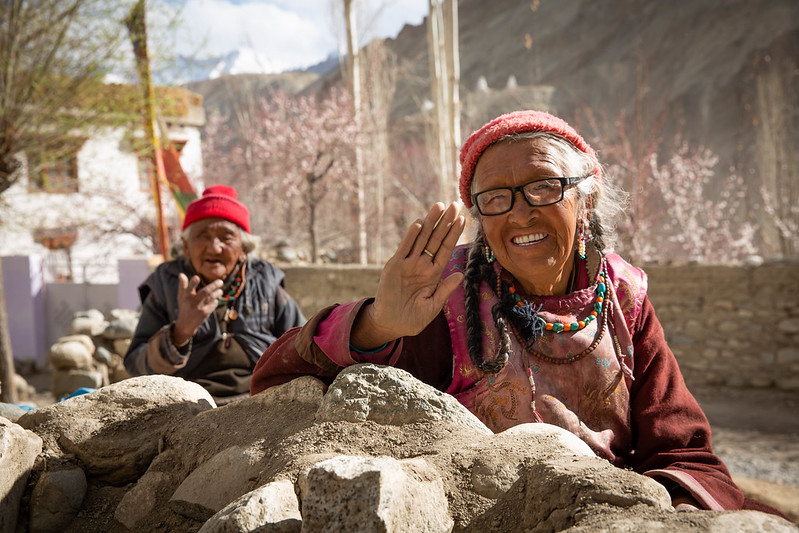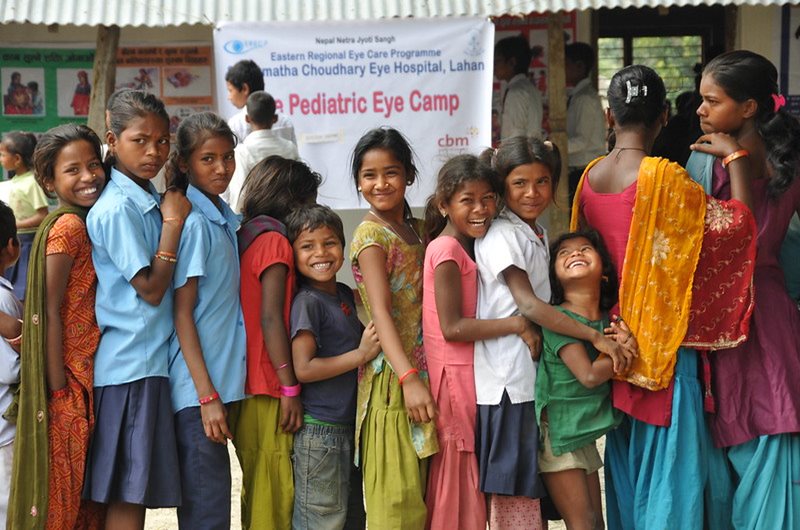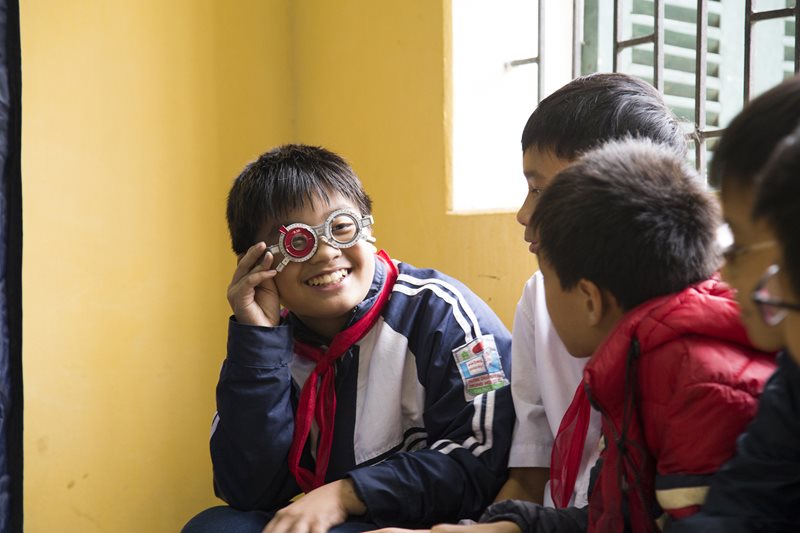The World Health Organization (WHO) and its partners in the eye health sector, including the International Agency for the Prevention of Blindness (IAPB) have launched their first ever world report on vision with key contributions from IAPB members – The Fred Hollows Foundation and Sightsavers.
The purpose of the World Report on Vision is to generate global awareness on the extent of vision impairment and blindness around the world.
The report seeks to address the issues surrounding the delivery of eye care through existing health systems.
The report also highlights that tackling avoidable blindness and vision impairment requires a solution that is focused on integrated, people-centred care that’s part of universal health coverage.
Key findings of the report:
The World Report on Vision reveals that at least 1 in 7 people across the world have a vision impairment that could have been prevented or has yet to be addressed, and the number of people with eye conditions is set to increase due to an ageing population and sedentary lifestyles.
Hundreds of millions of people have a severe vision impairment, which puts them at higher risk of bullying and sexual violence, and a large proportion of people rank blindness as one of their most feared ailments, ahead of other conditions such as cancer.
Global magnitude
- Globally more than 2.2 billion people have a vision impairment
- 1 billion visually impaired people have a condition that could have been prevented or has yet to be treated
- More than 1 billion people worldwide are living with vision impairment because they do not get the care they need for conditions such as:
- Uncorrected refractive error (short and far sightedness)
- Cataract
- Diabetic Retinopathy
- Trachoma
- Glaucoma
Inequity in eye health
- The burden of most eye conditions and vision impairment is not borne equally
- Poor eye health weighs more heavily on:
- Low and middle-income countries
- Rural communities
- Older people
- Women
- People living with disabilities
- Ethnic minorities
- Indigenous populations
Increasing global demand
- Global demand for eye care is set to triple by 2050 because of:
- Population growth
- Ageing population
- Changes in lifestyle
Universal Health Coverage and the Sustainable Development Goals
- The World Report on Vision recognises that people-centred eye care can advance Universal Health Care and will be key to achieving Sustainable Development Goals on good health and well-being

Key recommendations of the report:
World Report on Vision has identified the following global priority areas and recommends the following actions:
- Make eye care an integral part of universal health coverage
- Implement integrated people-centred eye care in health systems
- Promote high-quality research
- Monitor trends and evaluate progress
- Raise awareness, and engage and empower people and communities
Integration
The key proposal of the report is the importance of integrating eye care within the overall health strategy and scaling up eye care within national health services.
Integrated people centred eye care
The report goes on to highlight the importance of eye care being ‘people-centred’ so that services are managed and delivered holistically, focusing on eye health awareness, prevention, treatment and management of eye conditions.
Data
The report calls on the need to address the gaps in data; particularly regarding met and unmet eye care needs so that services can be planned accordingly and progress can be monitored effectively.
Financial hardship
The report calls for protection against financial hardship, which involves ensuring that the cost of eye care does not expose those seeking that care to catastrophic spending on health.
Coordination
The report concludes its recommendations by saying that there needs to be greater coordination of eye care across all sectors, including social services, finance, education, labour, and the private sector.

Our commitment to the World Report on Vision at The Fred Hollows Foundation:
The Fred Hollows Foundation is an active member of the IAPB and works closely with the agency to fulfil Fred’s vision of a world in which nobody is needlessly blind or vision impaired.
Read about our contributions to the Sustainable Development Goals.
The Foundation is focused on preventing blindness and restoring sight, working in under-resourced countries, but also focusing within Australia to close the eye health care gap for Aboriginal and Torres Strait Islander communities.
Find out about our biggest ever investment in Aboriginal and Torres Strait Islander eye health
How do we work?
Our priority is to work with communities to improve their own eye health. We do this through:
- Funding and facilitating life-changing surgeries and treatments
- Training doctors, nurses, and clinical and community eye health workers
- Strengthening health systems through advocacy and influence
- Engaging with local communities and empowering them to take their eye health in their own hands
- Investing in new technologies and piloting new approaches to deliver eye care more effectively
How do we deliver impact?
In order to deliver maximum impact, our work is driven by four critical eye care goals:
- Making effective treatment for cataract, which is a leading cause of blindness, accessible to all
- Eliminating trachoma, which is the leading infectious cause of blindness, from Aboriginal and Torres Strait Islander communities as well as in countries where it is prevalent
- Making effective prevention and treatment for refractive error accessible for all
- Making diabetic retinopathy (DR), which is the leading cause of avoidable blindness in working class people, more affordable to manage
Read more about our strategic priorities and impact areas in our Five Year Strategy

Learn more